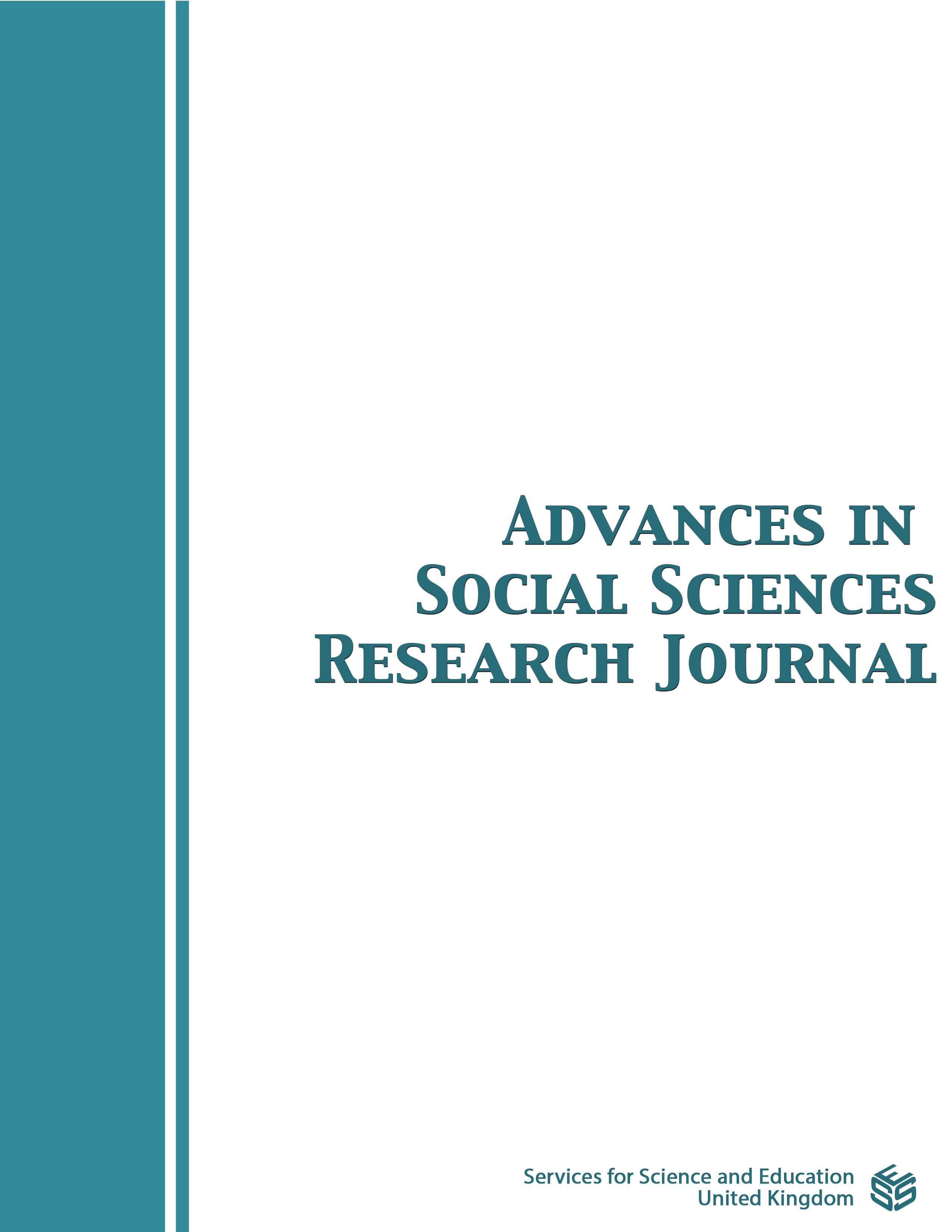INSTRUCTIONAL LEADERSHIP PRACTICES OF HEADS OF SENIOR HIGH SCHOOLS IN GHANA
DOI:
https://doi.org/10.14738/assrj.87.10594Keywords:
instructional leadership, effective schools, school improvement, learning outcomesAbstract
A non-experimental survey was conducted to investigate the instructional leadership practices of senior high school heads in Ghana. Data were collected using a closed-ended Likert type items from a simple randomly selected sample of a defined population of school heads of senior high schools in Ghana. Data collected were analysed using rank-ordered means and independent samples test of differences of means. The study findings revealed that the school heads frequently adopt major key practices of instructional leadership. However, the school heads most frequently adopt the practice of communicating the school’s goals. The study further revealed that differences exist the frequency at which heads of high performing schools and those of non-high performing schools adopt instructional leadership dimensions of defining the school’s goals and promoting a positive school learning climate.
References
Abaya, J. O., & Normore, A. H. (2010). No strangers in this school: How school principals can honor community and public relations that support multicultural students. Journal of School Public Relations, 31(3), 189-204
Amakyi, M. (2017). School improvement: Strategies for effective change. Accra, Ghana: Datro & Wrenco.
Bush, T. (2016). School leadership and management in England: the paradox of simultaneous centralisation and decentralization. Research in Educational Administration & Leadership, 1(1), 1-23
Brolund, L. (2016). Student Success through Instructional Leadership. BU Journal of Graduate Studies in Education, 8 (2), 42 - 45
Carraway, J. H., & Young, T. (2014). Implementation of a districtwide policy to improve principals’ instructional leadership: Principals’ sensemaking of the skillfull observational and coaching laboratory. Educational Policy, 29(1), 230-256
Chamley, J., Caprio, E., & Young, R. (2001). The principal as a catalyst and facilitator of planned change. Phi Delta Kappan, 82 (8), 598-606
Cunningham, G., & Cordeiro, P. A. (2012). Educational leadership: A bridge to improved practice (5th ed.). Boston: Pearson.
Danielson, C. (2006). Teacher leadership that strengthens professional practice. Alexandria, VA: ASCD
Day, C., Leithwood, K., & Sammons, P. (2008). What we have learned, what we need to know more about. School Leadership & Management, 28(1), 83-96
DeWitt, P. M. (2020). Instructional leadership: Creating practice out of theory. Thousand Oaks, CA: Corwin
Fink, E., & Resnick, L. B. (2001). Developing principals as instructional leaders. Phi Delta Kappan, 82 (8), 598 – 606.
Fullan, M. (2014). The principal: Three keys to maximizing impact. San Francisco: Wiley
Hall, G. E., Negroni, I. A., & George, A. A. (2013). Examining relationships between urban principal change facilitator style and student learning. International Journal of Leadership and Change, 1(1), 36 - 46
Hallinger, P. (2009). Leadership for 21st century schools: From instructional leadership to leadership for learning. Public Lecture Series of the Hong Kong Institute of Education on 23 September 2009
Hallinger, P., & Heck, R. (1998). Exploring the principal's contribution to school effectiveness: 1980-1995. School Effectiveness and School Improvement, (9), 157-191
Hallinger, P., & Heck, R. H. (2010). Collaborative leadership and school improvement: Understanding the impact on school capacity and student learning. School Leadership and Management, 30(20), 95-110.
Hallinger, P. and Murphy, J. (1986) The Social Context of Effective Schools. American Journal of Education, 94, 328-355
Hallinger, P., & Wang, W. C. (2015). Assessing instructional leadership with the principal instructional management rating scale. Dordrecht, Netherlands: Springer Heiman, G. W. (2013). Basic statistics for the behavioral sciences, (7th ed.). Boston: Houghton Mifflin
Henry, J., & Woody, A. (2013). Strategic principal communication. Journal of School Public Relations, 34(9), 370-376
Hoerr, T. R. (2015). Principal connection: What's an instructional leader? Educational Leadership,, 73( 2), 84 -85
Horth, D., & Vehar, J. (2014). Becoming a leader who fosters innovation. Greensborough, North Carolina: Center for Creative Leadership
Jenkins, B. (2009). What it takes to be an instructional leader. Principal, 88 (3), 34 - 37
Kowalski, T. (2010). The school principal: visionary leadership and competent management. New York: Routledge
Kowalski, T. (2013). The school superintendent: Theory, practice, and cases (3rd ed). Thousand Oaks, CA: Sage Publishing
Lasater, K. (2016). School leader relationships: The need for explicit training on rapport, trust, and communication. Journal of School Administration Research and Development, 1(2), 19 -26
Lashway, L. (2002). Developing Instructional Leaders. (ERIC U.S. Department of Education contract No.ED-99-C0-0011). Retrieved June 10, 2021 from www.ericdigests.org/2003-2/leaders.html
McEwan, E. K. (2009). Ten traits of highly effective schools: Raising the achievement bar for all students. Thousand Oaks: Corwin Press
Mestry, Raj. (2017). Principals' perspectives and experiences of their instructional leadership functions to enhance learner achievement in public schools. Journal of Education (University of KwaZulu-Natal), (69), 257-280. Retrieved July 17, 2021, from http://www.scielo.org.za/scielo.php?script=sci_arttext&pid=S2520-98682017000200012&lng=en&tlng=en
Moorosi, P., & Bush, T. (2019). Preparation and Development of School Leaders in Africa. London: Bloomsbury Academic
Ng, D.F.S. (2019). Instructional leadership. In B. Wong, S. Hairon, & P. T. Ng (Eds.) School Leadership and Educational Change in Singapore (pp.7 – 30). Switzerland: Springer Nature
Sergiovanni, T. J., Green, R. L. (2015). The principalship: A reflective practice perspective (7th ed.). New York, NY: McGraw-Hill.
Shannon, G.S., & Bylsma, P. (2007). The nine characteristics of high performing schools: A research-based resource for schools and districts to assist with improving student learning (2nd Ed.). Olympia, WA: OSPI
Waters, T., Marzano, R. J., & McNulty, B. (2003). Balanced leadership: What 30 years of research tells us about the effect of leadership on pupil achievement. A working paper. Aurora, CO: Mid-continent Research for Education and Learning
Downloads
Published
How to Cite
Issue
Section
License
Copyright (c) 2021 Michael Amakyi

This work is licensed under a Creative Commons Attribution 4.0 International License.
Authors wishing to include figures, tables, or text passages that have already been published elsewhere are required to obtain permission from the copyright owner(s) for both the print and online format and to include evidence that such permission has been granted when submitting their papers. Any material received without such evidence will be assumed to originate from the authors.






